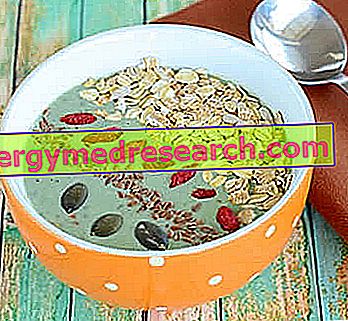What is it and what is it for
Smoking is a method used since ancient times to prolong food preservation. In addition to this technological effect, thanks to the selection of various and specific types of wood, smoking provides an important contribution to the color, flavor and characteristic aroma of some food products.

How it is performed
The traditional technique exploits the substances present in the smoke, freed from the slow and incomplete combustion, therefore without a flame, of various types of non-resinous wood. These substances penetrate the surface layers of the food, altering their organoleptic characteristics and prolonging their shelf-life; for this purpose, hard wood chips are generally used - such as oak, chestnut, walnut, poplar, acacia, birch, beech, etc. - while aromatic plants such as thyme, bay leaves, marjoram and rosemary have the purpose of improving the organoleptic traits of the smoked food. By law, impregnated, colored, glued, painted or similarly treated woody woods and plants cannot be used during the entire process. The use of moldy and damp woods is also not recommended.
Among the innumerable components of smoke, which can also vary according to the wood used, we mention formaldehyde, phenolic compounds and aliphatic acids (from formic to caproic), which have a preservative action, further enhanced by dehydration and food heating. . Furthermore, smoking is often preceded by other conservative techniques, such as drying, bagging or salting, which inactivates certain microorganisms, increases dehydration, gives the product greater flavor and promotes smoke penetration.
Today, however, the smoking of food has practically lost its preservative value and is mostly used as an aromatization technique (since it is not able to ensure the microbiological stability of the product).
Watch the video and find out how to smoke salmon at home
Smoked Salmon - All the Tricks for Homemade Smoking
X Problems with video playback? Reload from YouTube Go to Video Page Go to Video Recipes Section Watch the video on youtubeHealth risks
Among the various substances present in the smoke, of course, there are also noxious substances, such as the polycyclic aromatics (oncogene substances), including benzo (a) pyrene and benzo (a) anthracene. Through special production techniques (wood used, physical filters, distillation, temperature and humidity, etc.) we try to limit the quantity of these compounds as much as possible, among other things strictly regulated by the legislator.
Depending on the temperature of the smoke used, the products can be hot-smoked (50-85 ° C for 2-4 hours), semifreddo (25-40 ° C several hours) or cold (20-25 ° C for a few days) ). As the temperature decreases, the humidity of the environment must be reduced, while the exposure times must increase (cold smoke is used, for example, for salmon and other raw foods). The smoking process takes place in special rooms, in which the smoke produced in different rooms (smokehouses or ovens for incomplete combustion) is conveyed, previously purified by filters of different diameters that have the purpose of retaining the larger corpuscular parts (soot) .
An alternative technique exploits the so-called liquid smoke, obtained by condensation and purification of smoke derived from the combustion of wood. Distillation reduces the content of potentially toxic substances, such as polycyclic aromatic hydrocarbons, see benzopyrene, which are precisely carcinogens.
The purified mixture is then applied to the product by nebulization, showering, immersion or by injection into the mixture. In any case, the liquid smoking technique has very little preservative effect and this characteristic is obtained by using specific additives (such as nitrites, nitrates, ascorbic acid and ascorbates) or other preservation techniques.
Once again, therefore, we have the proof that artisanal products are not always preferable to industrial ones, since a smoked food at home is much more at risk of severe contamination by polycyclic aromatic hydrocarbons than another subjected to industrial smoking processes .
In the Diet
In a balanced diet smoked foods should have a marginal, if not occasional, role and should preferably be consumed in association with vegetables, preferably raw. Both for the smoking technique and above all for the common joint use of nitrites, an excessive consumption of smoked foods is in fact considered one of the risk factors for stomach cancer, together with alcoholism, smoking, infection with Helicobacter pylori and the inevitable genetic and family predisposition.



